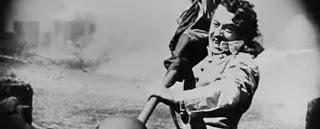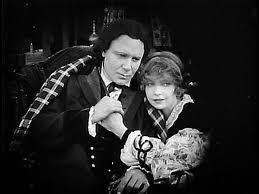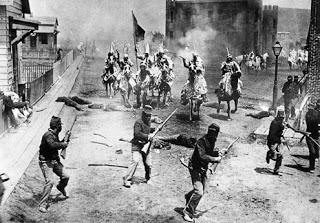"The former enemies of North and South are united again in common defense of their Aryan birthright."
Modern cineastes regard The Birth of a Nation (1915) with derision otherwise reserved for Nazi propaganda. D.W. Griffith's masterwork can't be separated from either its innovations or its racism. A reviewer's only hope is assessing and balancing both aspects, a task this paean to white supremacy makes painfully complicated.Benjamin Cameron (Henry B. Wathall), scion of South Carolina aristocrats, becomes a Colonel in the Confederate Army during the Civil War. He meets Elsie Stoneman (Lillian Gish), daughter of abolitionist Congressman Austin Stoneman (Ralph Lewis), whom he's long admired from afar. After war's end and Abraham Lincoln's (Joseph Henabery) assassination, the North uses troops, Republican carpetbaggers and freed blacks to crush the defeated South. Benjamin and friends decide to fight back by forming the Ku Klux Klan.
To be sure, The Birth of a Nation was neither Griffith's first feature (that's Judith of Bethulia) nor the first epic (Giovanni Pastrone's Cabiria (1914) takes the prize). Which doesn't diminish the importance of Nation, which synthesized a decade of painstakingly-honed techniques into a sweeping, operatic melodrama. In applying the brilliance employed in dozens of shorts to a three hour feature, Griffith produced the benchmark for all future movies.

What's likely to impress modern viewers most are Nation's action scenes. Griffith's biggest achievement is a rendering of the Battle of Petersburg, a cast of thousands rumble dwarfing Cecil B. De Mille and David Lean's creations. Griffith and photographer G.W. Bitzer enhance the effect with panoramic crane shots, massive set design and matte work. Griffith renders the burning of Atlanta with skillful matte work; he stages Sherman's March by panning from rapacious Yankees to horrified women watching from above. Griffith topped the movie with his even bigger Intolerance (1916), telling parallel stories across several centuries.
Griffith intends Nation as a national epic: after the Civil War, North and South forge a common union. Unfortunately, Griffith (adapting Thomas Dixon's The Clansman) couches this message as white supremacy. Modern viewers familiar with Tommy Lee Jones' acerbic Thaddeus Stevens in Lincoln will balk at Griffith's Stoneman, a bewigged, clubfooted Republican imposing despotism on the prostrate South from sheer malice. For Griffith, only a fool or a monster desires racial equality, and Stoneman is both.

This ahistorical nonsense is bad enough, but Griffith hits peak revulsion by couching their threat in sexual terms. Enter Silas Lynch (George Siegman), Stoneman's mulatto henchman who dreams not only of equality, but establishing a literal Black Empire. He's so disgusting that even Stoneman, who keeps a black mistress, recoils when he courts his daughter. Naturally that establishes a Snidley Whiplash scenario, with a bound-and-gagged Elsie awaiting rescue from a lascivious Negro. She fares better than Margaret Cameron (Miriam Cooper), who leaps from a cliff at the mere approach of a black soldier.
It's tempting to dismiss Nation as the product of its time. Yet even in 1915, it inspired NAACP protests and film-length rebuttals, triggered race riots and spurred the Ku Klux Klan's rebirth. It legitimized the Lost Cause narrative, which seeped into popular culture through less inflammatory works like Gone With the Wind. If we view Margaret Cameron's fate as absurd, how many Westerns, colonial adventures and even fantasy films couch similar fears of defilement in more innocuous settings? Nation touches a deeply unsettling vein in American culture that hasn't faded.

Which describes The Birth of a Nation perfectly. Arguably, no single film was more important to cinema history; yet few films, aside from Jud Suss, espouse such a toxic worldview. It's best-viewed by film students with a strong appreciation for cinematic history, and those with a strong stomach for hate.


